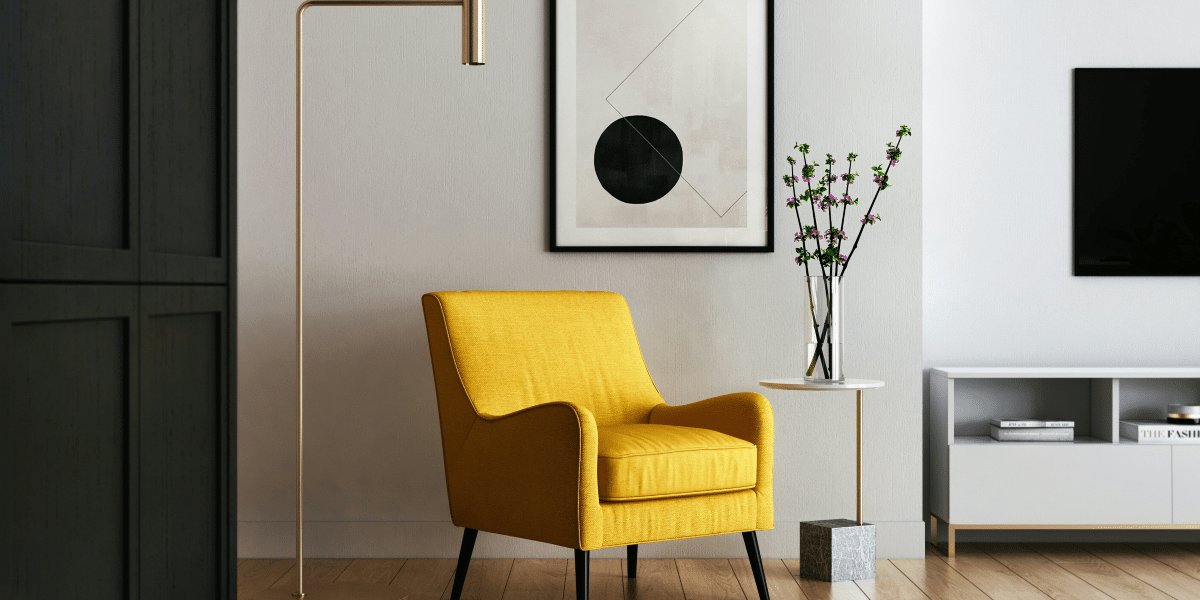In the ever-evolving world of interior design, accent walls have emerged as a powerful tool to transform spaces. These dynamic design elements can breathe new life into a room, providing depth, focus, and a touch of personality. Whether you’re looking to add a bold statement or subtle elegance, an accent wall can be the perfect solution. Let’s delve into the role of accent walls in modern interior design, exploring how they can enhance your living space and the best practices for incorporating them into your home.
What is an Accent Wall?
An accent wall, also known as a feature wall, is a wall whose design differs from the others in the room. This difference can be achieved through color, texture, pattern, or material. The primary goal of an accent wall is to create a focal point that draws the eye and adds visual interest to the space. Unlike traditional walls, accent walls are designed to stand out, making them a popular choice for homeowners and designers alike.
For those in urban settings like house painters Sydney, creating an accent wall can be an exciting project that showcases creativity and expertise. Professional painters can help you choose the right colors and finishes to achieve the desired effect, ensuring that your accent wall complements the overall design of your home.
The Benefits of Accent Walls
Accent walls offer a range of benefits that can enhance both the aesthetic and functional aspects of a room. Here are some key advantages:
1. Adds Depth and Dimension: An accent wall can add depth to a room, making it appear larger and more dynamic. By using contrasting colors or textures, you can create a sense of depth that adds visual complexity and interest.
2. Highlights Architectural Features: If your room has unique architectural features, such as a fireplace, built-in shelving, or a niche, an accent wall can highlight these elements, making them stand out as focal points.
3. Defines Spaces: In open-plan living areas, an accent wall can help define different zones without the need for physical barriers. This can be particularly useful in studio apartments or large, open spaces where you want to create distinct areas for different activities.
4. Injects Personality: An accent wall is an excellent way to express your personality and style. Whether you choose a bold color, a striking pattern, or an interesting texture, an accent wall can reflect your unique taste and make your space feel more personal.
5. Creates Visual Focus: By drawing attention to a specific area, an accent wall can create a visual focus that anchors the room. This can be particularly effective in rooms with minimal decor, where the accent wall serves as the primary design element.
Choosing the Right Wall
Selecting the right wall to accentuate is crucial for achieving the desired effect. Here are some tips to help you choose the best wall for your feature:
1. Consider the Room’s Layout: Choose a wall that naturally draws attention, such as the wall behind the bed in a bedroom, the wall with the fireplace in a living room, or the wall facing the entrance in a foyer.
2. Avoid Overcrowded Walls: Select a wall that isn’t cluttered with furniture, artwork, or windows. An accent wall should be relatively unobstructed to ensure it stands out.
3. Leverage Architectural Features: If your room has a unique architectural feature, consider making that wall the accent wall. This can enhance the feature’s prominence and create a cohesive design.
4. Think About Lighting: The way a wall is lit can affect how it looks as an accent wall. Natural light, artificial light, and shadows all play a role in highlighting the wall’s color and texture.
Choosing the Right Colors and Materials
The choice of color and material for your accent wall will significantly impact the overall look and feel of the room. Here are some ideas to consider:
1. Bold Colors: Bright and bold colors like deep blues, rich reds, or vibrant yellows can create a dramatic effect. These colors are perfect for adding energy and excitement to a room.
2. Neutral Shades: For a more subtle and sophisticated look, opt for neutral shades like soft grays, warm beiges, or classic whites. These colors can create a calming and elegant atmosphere.
3. Patterns and Textures: Wallpaper, stencils, or textured finishes can add an extra layer of interest to your accent wall. Consider geometric patterns, floral designs, or textured materials like brick, wood, or stone.
4. Contrasting Colors: Use contrasting colors to create a striking effect. For example, a dark accent wall in a room with light-colored walls can create a beautiful contrast that adds depth and dimension.
5. Complementary Colors: Choose colors that complement the existing color scheme of the room. This can help create a harmonious and balanced look.
Best Practices for Creating Accent Walls
To ensure your accent wall enhances your space, follow these best practices:
1. Test Colors and Materials: Before committing to a color or material, test a small section of the wall to see how it looks in different lighting conditions. This can help you make an informed decision and avoid disappointment.
2. Balance with Decor: Ensure that the rest of the room’s decor complements the accent wall. Furniture, artwork, and accessories should enhance the wall rather than compete with it.
3. Keep It Simple: Avoid overcomplicating the design. A simple, well-executed accent wall can be more effective than a busy, cluttered one.
4. Consider the Room’s Function: Think about how the room is used when choosing colors and materials. For example, calming colors are ideal for bedrooms, while vibrant colors can energize a living room or playroom.
5. Work with Professionals: If you’re unsure about how to create the perfect accent wall, consider working with professional designers or painters. House painters Sydney can provide expert advice and ensure a flawless finish that enhances your space.
Accent Wall Ideas for Different Rooms
Here are some ideas for incorporating accent walls into different rooms of your home:
1. Living Room: Create a focal point with a bold-colored wall behind the sofa. Alternatively, use a textured material like reclaimed wood or stone to add warmth and character.
2. Bedroom: The wall behind the bed is a natural choice for an accent wall. Consider using a soothing color or a soft, textured finish to create a relaxing ambiance.
3. Kitchen: Add interest to your kitchen with a tiled accent wall or a bold paint color. A backsplash wall can also serve as an accent, adding both functionality and style.
4. Bathroom: Use moisture-resistant materials like tiles or waterproof wallpaper for a bathroom accent wall. A vibrant color or an interesting pattern can make the space feel more luxurious.
5. Home Office: Create a productive and inspiring environment with a bold-colored or patterned accent wall behind your desk. This can help define the workspace and boost creativity.
Accent walls are a versatile and impactful design element that can transform any room in your home. By carefully selecting the right wall, colors, and materials, you can create a focal point that enhances the overall design and adds a personal touch to your space. Whether you choose to tackle the project yourself or enlist the help of professionals like house painters Sydney, the key is to have fun and experiment with different ideas. With a little creativity and planning, an accent wall can breathe new life into your home and make it truly unique. So, why not start exploring the possibilities and let your walls tell a story?
Published by: Nelly Chavez

















